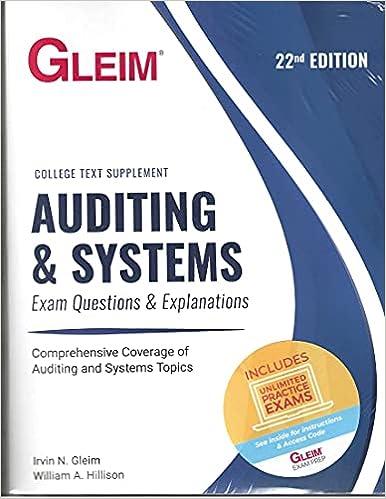only need C. 3. Recomend the recognition (if any) for unused miles.

CASE 2-3 FIRM COMMITMENT? In the early 1980s, airlines introduced frequent-flier awards to develop passenger loyalty to a single airline. Free tickets and possibly other awards were made available to passengers when they accumulated a certain number of miles or flights on a particular air carrier. These programs were potentially good for the passenger and the airline as long as the awards were (continued) arning. All Rights Reserved. May not be copied, med, o duplicated, in whole or in pan. The tole right come third party content may be suppressed from the book ander Chapter). Editorial review hu any suppressed content does not materially affect the overall learning experience Compage Lingerves the right to remove all city time when rights restrictions are Introduction to Financial Statements and Other Financial Reporting Topics (CASE 2-3 CONTINUED) not too generous and the airlines could minimize revenue displacement from a paying passenger. Originally, there were no restrictions. Anyone with the necessary miles could take any flight that had an available seat. In the late 1980s, most airlines changed their no-restriction programs to programs with restrictions and blackout days. The airlines also added partners in frequent-flier programs, such as car rental companies and hotels. These partners handed out frequent-flier miles compensating the airlines in some manner for the miles distributed. Airlines also added triple-mileage deals. A consequence of these expanding frequent-flier programs was a surge in the number of passengers flying free and a surge in unused miles. To get a handle on the cost and the unused miles, airlines increased the frequent-flier miles needed for a flight and placed time limits on the award miles. The increased frequent-flier miles needed for a flight and the time limits prompted law- suits. Many of these lawsuits were filed in state courts. One of the suits filed in the District Court in Chicago in 1989 made its way to the U.S. Supreme Court. In 1995, the Supreme Court ruled that federal airline deregulation law would not bar the breach-of-contract claim in the state court. In June of 1995, a District Court in Dallas ruled in favor of the airline in a case involving an increase in miles needed to earn a trip. Airlines interpret this decision as upholding their right to make changes to their frequent-flier programs. Required a. In your opinion, are the outstanding (unused) miles a liability to the airline? (Substantiate your answer.) b. Comment on the potential problems involved in estimating the dollar amount of any potential liability c. 1. What is a contingent liability? 2. In your opinion, are unused miles a contingent liability to the air carrier? 3. Recommend the recognition (if any) for unused miles. CASE 2-3 FIRM COMMITMENT? In the early 1980s, airlines introduced frequent-flier awards to develop passenger loyalty to a single airline. Free tickets and possibly other awards were made available to passengers when they accumulated a certain number of miles or flights on a particular air carrier. These programs were potentially good for the passenger and the airline as long as the awards were (continued) arning. All Rights Reserved. May not be copied, med, o duplicated, in whole or in pan. The tole right come third party content may be suppressed from the book ander Chapter). Editorial review hu any suppressed content does not materially affect the overall learning experience Compage Lingerves the right to remove all city time when rights restrictions are Introduction to Financial Statements and Other Financial Reporting Topics (CASE 2-3 CONTINUED) not too generous and the airlines could minimize revenue displacement from a paying passenger. Originally, there were no restrictions. Anyone with the necessary miles could take any flight that had an available seat. In the late 1980s, most airlines changed their no-restriction programs to programs with restrictions and blackout days. The airlines also added partners in frequent-flier programs, such as car rental companies and hotels. These partners handed out frequent-flier miles compensating the airlines in some manner for the miles distributed. Airlines also added triple-mileage deals. A consequence of these expanding frequent-flier programs was a surge in the number of passengers flying free and a surge in unused miles. To get a handle on the cost and the unused miles, airlines increased the frequent-flier miles needed for a flight and placed time limits on the award miles. The increased frequent-flier miles needed for a flight and the time limits prompted law- suits. Many of these lawsuits were filed in state courts. One of the suits filed in the District Court in Chicago in 1989 made its way to the U.S. Supreme Court. In 1995, the Supreme Court ruled that federal airline deregulation law would not bar the breach-of-contract claim in the state court. In June of 1995, a District Court in Dallas ruled in favor of the airline in a case involving an increase in miles needed to earn a trip. Airlines interpret this decision as upholding their right to make changes to their frequent-flier programs. Required a. In your opinion, are the outstanding (unused) miles a liability to the airline? (Substantiate your answer.) b. Comment on the potential problems involved in estimating the dollar amount of any potential liability c. 1. What is a contingent liability? 2. In your opinion, are unused miles a contingent liability to the air carrier? 3. Recommend the recognition (if any) for unused miles








